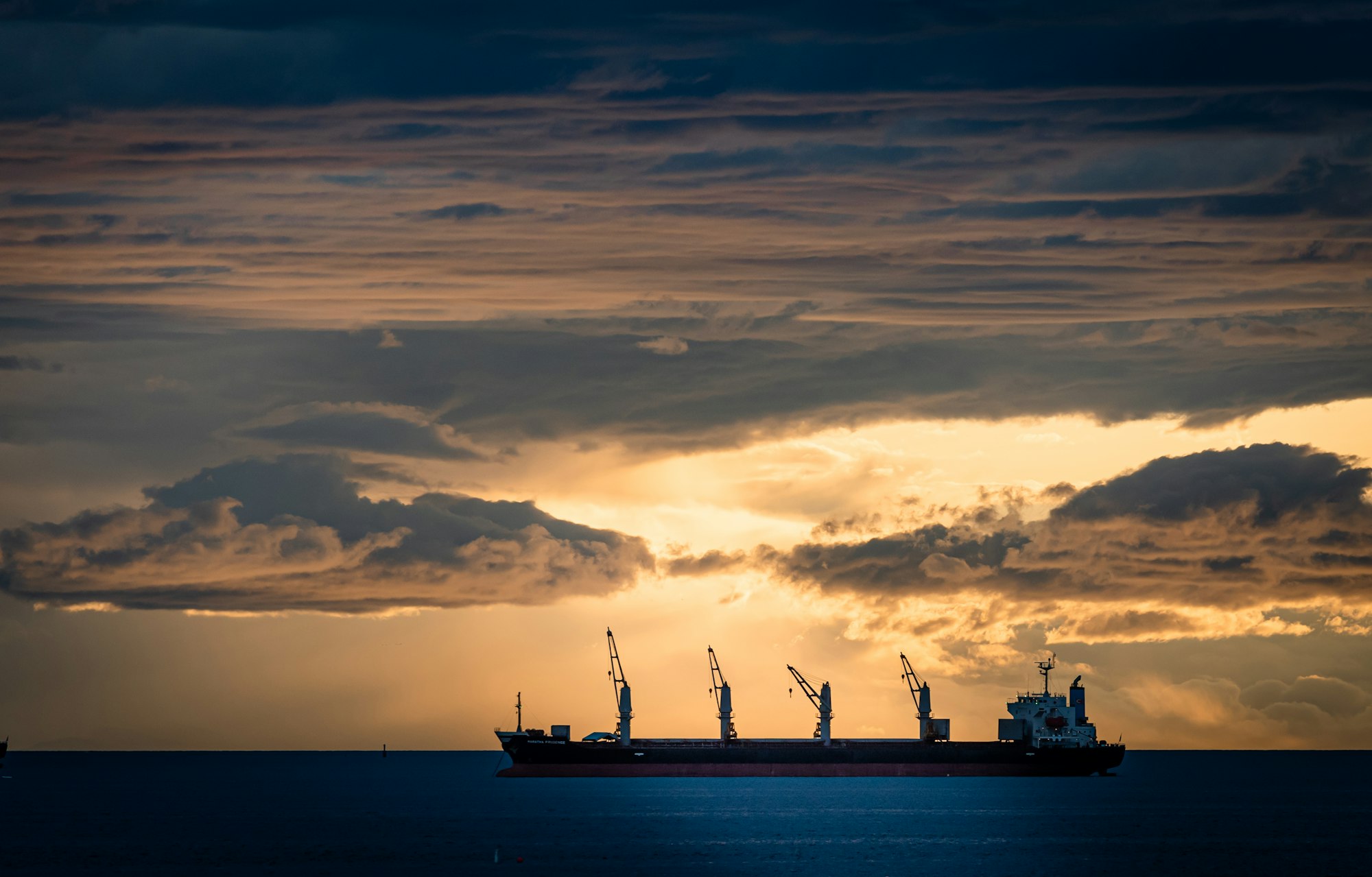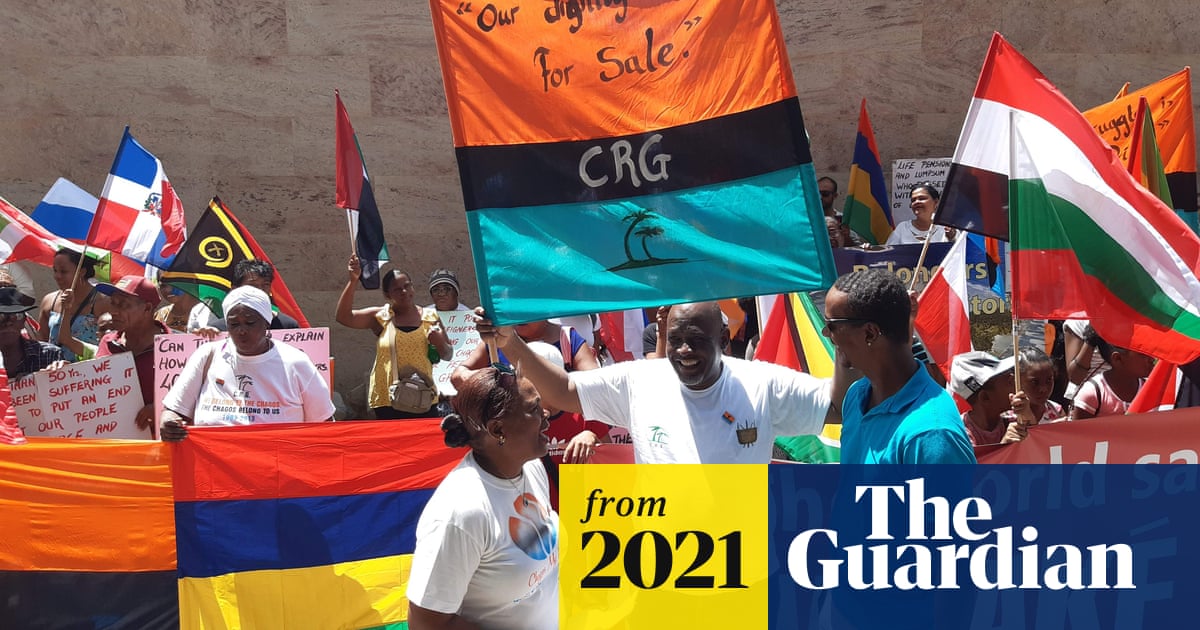Setting the Pieces for World War III #381
The CIA Chief visited Sri Lanka recently. Why? Why Now? How is it linked to the Ukraine War? Are the pieces being set up for the next World War? Let's check.

When the Head of America's intelligence agency - the CIA - visits a small country, the real event is not just that.
The real story is in the background. Yes, that visit shows an urgency, but it also shows that something of great significance and impact is unfolding as we speak.
Given how the lines have been drawn up now, the possibility of World War III can no longer be ruled off now.
In the next few months.
The camps are deeply entrenched. And nothing short of supremacy will do for every player in this battle.
An impossible eventuality.
That is the most dangerous element of the geopolitical shenanigans going on.
Join us on Telegram

Indian Ocean and World War III
In October 2022, the Foreign Affairs journal had a piece with an interesting question and premise.

The United States is getting ready to take on both, Russia and China, together.
In what would surely be the bloodiest of wars on this planet.
While the Ukraine War started in Europe and has its largest impact there, the fact is that the European situation is very closely linked to the Indo-Pacific.
Let us understand a few things about Indo-Pacific.
But before we go there, please read this newsletter we have written in the past.

The Indian Ocean Region (IOR) is a crucial area of global maritime defense activity. It is a critical corridor that links the Middle East, Europe, Africa, South Asia, and Southeast and Northeast Asia.
Home to almost 2.7 billion people, its total activity comprises:
- half of the world’s container ships
- one-third of the world’s bulk cargo traffic
- two-thirds of the world’s oil shipments
Whoever controls this region controls the pulse of global trade.
The region is divided into three components: South Asian (India, Sri Lanka, and Maldives), African (Mauritius and Seychelles), and Middle Eastern (Oman and Yemen).
The Indian Ocean is often split among the South Asian, African, and Middle Eastern regions, but these artificial divisions emphasize the landmasses and push the maritime domain to the periphery. Further, they move the concerns and priorities of island nations, which otherwise would act as important regional players, under the challenges of their continental counterparts. Under this framework, Sri Lanka and Maldives are considered part of South Asia, while Mauritius and Seychelles are considered part of Africa. (Source: "We’re Thinking About the Indian Ocean All Wrong" / Carnegie Endowment)
But are these regions really separate components? Carnegie Endowment realized that to understand the complexities inherent in the region, the "Indian Ocean must be viewed as a single region."
The whole region is highly competitive and everyone has been making moves.
India, France, Australia, and the US are in the race to carve out different pieces for themselves. Of course, China has its own agenda in the Indian Ocean region.
The Indian Naval Base
As we shared in May 2022, India has been building a naval base on Agaléga, an island of Mauritius.

The reports were shared by Al Jazeera and Lowy Institute.
Satellite imagery shows major airfield and port developments are well underway, reportedly worth some US$87 million. Comparing the most recent images from Google Earth to the same location as seen in 2014 shows a new 3000-metre runway – capable of hosting the Indian Navy’s new Boeing P-8I maritime patrol aircraft – and considerable apron overshadows the existing airfield in the middle of the island. (Source: Agalega: A glimpse of India’s remote island military base / Lowy Institute
Here is the before and after.

One of the things that is extremely interesting is that it is very close to the US/UK territory of Diego Garcia.
The small, remote Mauritian island of North Agalega, located in the south-western Indian Ocean, 700 miles north of Mauritius, is currently a hive of construction activity. India sought access to the islands in 2015 to develop as an air and naval staging point for surveillance of the south-west Indian Ocean – in a sense redolent of facilities other nations operate, such as the joint US-UK base at Diego Garcia. (Source: West of Diego Garcia, India is Building an Island Base of its Own / The Maritime Executive)
Just check out the map for the proximity of the two bases in the Indian Ocean.

A word about Diego Garcia. The Naval Support Facility Diego Garcia is a British Ministry of Defense facility leased to the United States Navy. Even though the UK had to return the Diego Garcia islands per the ICJ verdict, the US is still occupying them.

US has a major presence around the world via its military and naval bases. In fact, outside of the US, the American military has 800 military bases and logistical facilities to help its global efforts.
But while cars here drive on the right side of the road, this is not American soil: It is, in fact, a remote remnant of the British Empire. That is because in 1965, in the middle of the Cold War, the United States signed a controversial, secret agreement with the British government to lease one of the 60 or so Indian Ocean atolls that make up the Chagos Islands to construct a military base. That deal was secret because the UK was in the process of decolonizing Mauritius, of which the Chagos archipelago was a dependency. The Chagos Islands never got its independence day. Instead, it was cleaved from Mauritius and renamed the British Indian Ocean Territory, a move that the United Nations’ highest court in 2019 ruled was illegal under international law. Britain has now been instructed to properly finish the process of decolonization, and return the Chagos Islands, located half way between Africa and Indonesia, to Mauritius. The ruling, though non-binding, potentially creates a huge problem for the United States. Today, Diego Garcia is one of America’s most important – and secretive – overseas assets. Home to over 1,000 US troops and staff, it has been used by the US Navy, the US Air Force and even NASA – the island’s enormous runway was a designated emergency landing site for the space shuttle. Diego Garcia has helped to launch two invasions of Iraq, served as a vital landing spot for bombers that fly missions across Asia, including over the South China Sea, and has been linked to US rendition efforts. (Source: CNN)
Now coming back to the Indian base.
It seems the Mauritian government confirmed in a press release on May 18th, 2021 that India was fully financing a new 3 km long runway on the island of North Agaléga. New Delhi has had a military base there since 2015.
Why does India need the Agaléga base?
India regards the new base to be essential for facilitating both air and surface maritime patrols in the south-west Indian Ocean, and as an intelligence outpost. This recent satellite imagery now indicates the scale and capabilities of this new facility. The project entails a new airport, port and logistics and communication facilities and – potentially – “any other facility related to the project”. (Source: Agalega: A glimpse of India’s remote island military base / Lowy Institute)
One of the things that not many realize is that Agalega will help India to facilitate and monitor patrols over the Mozambique Channel.
The African channel
Why is the Mozambique Channel important?
Rovuma Basin in East Africa has untapped reserves of 100 trillion cubic feet of natural gas. US company Anadarko Petroleum invested $20 billion in Mozambique. Italian company Eni also signed a deal for $8 billion in 2017 for natural gas to market to Asia.
In fact, the Oil and Natural Gas Corporation (ONGC), Indian Oil Limited and Bharat Petroleum have bought a 30% stake in Anadarko’s Rovuma project in 2014.
With ONGC lining up USD 3 billion more investment in a giant Mozambique gas field, India today pressed the African nation to approve a law that will help protect its investment. ONGC Videsh Ltd, the overseas arm of state explorer Oil and Natural Gas Corp (ONGC), and Oil India Ltd (OIL) have already spent USD 5 billion in taking 20 per cent stake in Area-1 gas field. Their share of investment for developing the offshore gas field and converting the fuel into LNG for export in ships would be another USD 3 billion-plus. (Source: "ONGC lines up $3 billion investment in Mozambique" / Economic Times)
This was in 2015.
In 2019, ONGC Videsh Ltd expanded its footprint in Mozambique with an investment of $20 billion.

So you see what is going on here? The Middle-Eastern and African areas of the Indian Ocean have become theaters of competition between India, China, and the US.
The Indo-Pacific Region
The Indo-Pacific Region is in focus these days. It is a specific formulation that is being used for that. The Free and Open Indo-Pacific (FOIP).
Since then, Shinzo Abe, Narendra Modi and at that time Donald Trump solidified the concept as a bulwark against the geopolitical designs of China.
Under Biden, the FOIP had a rough start.

However, over time, it has taken on a new shape.
United States and the Indo-Pacific Region
So why has the Indo-Pacific become so critical for the United States?
Because for the US, Ukraine, and the Indo-Pacific are now inextricably linked right now. While Russia is the greatest threat in Europe, China is the greatest challenge in the Indo-Pacific.
And, the link between the two comes from the close relationship between China and Russia and the belief that the duo is now one big geopolitical bloc.
The existence of strategic tradeoffs between Europe and the Indo-Pacific is very real. What the United States does in one region impinges on its ability to resource deterrence in the other region. Thus, an over-prioritization of one region — and de-prioritization of the other — can open windows for opportunistic aggression. Indeed, the U.S. National Defense Strategy argues that China and Russia have expanded their cooperation and “either state could seek to create dilemmas globally for the Joint Force in the event of U.S. engagement in a crisis or a conflict with the other.” In this vein, some experts have warned about the challenge of dealing with simultaneous wars in Europe and the Indo-Pacific. The importance of Europe and the Indo-Pacific above all other regions is typically justified on the basis that they are the only two regions that harbor the demographic, industrial, technological, and military potential to allow any power dominating them to seriously challenge and ultimately threaten the United States. Hence, it is important to simultaneously preserve favorable balances in Europe and Asia by ensuring that no single power or coalition of powers controls the resources of either region. The assumption that the balance of power in both regions is structurally delicate — and requires permanent U.S. engagement — has led to recurring concerns about over-prioritizing one region at the expense of the other. (Source: AMERICA’S INDO-PACIFIC STRATEGY RUNS THROUGH UKRAINE / War on the Rocks)
Geopolitical alignments aside, it is the inherent criticality of the region that is becoming the key.
More importantly, the Indian Ocean is the key to most global trade. Whoever controls it, controls the world.
Sri Lanka's significance to the United States
If one carefully looks at the region, the ports and the bases in that entire stretch are being consolidated by different powers under their influence.
As the region, its islands, and ports are up for grabs, Sri Lanka and its ports assume importance.

In fact, in 2015 when John Kerry was the US Secretary of State, he made a speech at the Taj Samudra Hotel in Colombo on May 2nd. In that speech, he shared his perception of Sri Lanka and its importance.

To bring about the "partnership" that Kerry talked about, the US and Sri Lanka have signed two pacts:
- Acquisition and Cross-Servicing Agreement (ACSA)
- Status of Forces Agreement (SOFA),
You can check the details of ACSA here. What does ACSA do?
The Acquisition and Cross-Servicing Agreements (ACSA) program allows for the exchange of logistical support between DoD and an allied nation's military to meet unexpected needs or shortfalls of troops stationed abroad. Some examples include: food, billeting, clothing, communication services, medical services, spare parts/components, training services, and ammunition. ISO processes DoS clearances for ACSA requests. (Source: US Department of State)
What is SOFA? It provides free reign to US security forces and US Department of Defense personnel.
American security forces and civilian personnel of the U.S. Department of Defence (DoD), as well as U.S. contractors and their non-Sri Lankan employees “who may be temporarily present in Sri Lanka in connection with ship visits, training, exercises, humanitarian activities, and other activities” will have “privileges, exemptions, and immunities” equivalent to those accorded to the administrative and technical staff of a diplomatic mission. They would be “authorized to wear uniforms while performing official duties and to carry arms while on duty.” U.S. identification would be sufficient for their entry into and exit from Sri Lanka; that is, they would not need a Sri Lankan visa to enter the country. U.S. vessels, vehicles, and aircraft would be allowed to “exit and move freely within the territory of Sri Lanka” and be “free from boarding and inspection” by Sri Lankan security personnel. The United States also wants exemption from licenses, customs duties, taxes, and other charges within Sri Lanka. (Source: Sri Lankans Up in Arms Over US Military Pacts / The Diplomat)
So there is a strong interest in the US to take control of the Sri Lankan landscape.
Now in that context, we would like to see visits by American officials to Sri Lanka.
First, it was Victoria Nuland. She is a known regime change expert.
Nuland became known in the recent history of US imperialism for being one of the main organizers of the 2014 coup d’etat in Ukraine that toppled President-elect Viktor Yanukovych.In a leaked conversation with then US ambassador to Ukraine, Geoffrey Pyatt, she appears determining who should assume power after the coup.In the conversation, she indicates a name and the ambassador says that the European Union would not accept that nomination.Nuland’s response was: “Fuck the EU”. (Source: US Coup Specialist Victoria Nuland Visits Brazil / Brasilwire)
Nuland has been in Sri Lanka twice in the last year.

In January 2023, the Sri Lanka Navy (SLN) and Sri Lanka Air Force (SLAF) had the Cooperation Afloat Readiness and Training (CARAT)/Marine Exercise (MAREX) Sri Lanka 2023 with The U.S. Navy and Marine Corps.

And Nuland is not the only one who is paying a visit to Sri Lanka.
First, it was Jedidiah Royal, U.S. principal deputy assistant secretary of defense for Indo-Pacific Security Affairs who visited on February 16th.
The timeline is interesting because of a top-level, top-secret, tight-security U.S. delegation to Sri Lanka that took place on February 16. The delegation was led by Jedidiah Royal, U.S. principal deputy assistant secretary of defense for Indo-Pacific Security Affairs. During his visit, Royal met several government officials, including Defense Secretary Kamal Gunaratne and State Defence Minister Premitha Bandara Tennakoon. It is unclear whether he met President Ranil Wickremesinghe, although one opposition MP has alleged that he did. While details about these meetings have been withheld from the press, there has been much speculation, to the extent that Royal had to dismiss rumors about the United States establishing a military base in the country’s strategically important Trincomalee District. (Source: In Sri Lanka, Opposition Parties Allege a Secret CIA Visit / The Diplomat)
After Royal, CIA Chief Bill Burns visited Sri Lanka. Apparently for finalizing the naval base. Which makes sense.
After 30 years from that, in February 2023, a secret plane arrived in Sri Lanka from America, and the leftist party leaders mentioned that chief of C.I.A. William Burns had arrived in it. Foreign media reported the flight carrying the chief of C.I.A. came from Greece, and he was supposed to go to Nepal from Sri Lanka, but Nepal did not allow him to enter the country. CIA Chief’s visit is still a mystery but the leftist leaders said he discussed about setting up of a naval base in Trincomalee. During this meeting it is not known Ranil following his Uncle’s strategy sounded that if an election held the JVP’s rise and danger is its connection with China. It is not known whether Ranil tried to peruse CIA chief to get American support to obtain IMF facility and for him to put down JVP. Last year CIA chief Burns made a statement and said reason for Sri Lankan economic problem is Chinese debt trap and it is a good eye-opener for the countries depending on China. This shows in his agenda on Asia he has an interest on Sri Lanka as well. (Source: Is there a connection to IMF deal and CIA chiefs visit? / Mawrata News, Sri Lanka)
As a result of the CIA Chief's visit, Sri Lanka closed a $2.9 bn deal with IMF.
/cloudfront-us-east-2.images.arcpublishing.com/reuters/GMSSGPA6HRJTLOWRPZYM5D3C7Y.jpg)
There is one Twitter thread that gives interesting information on the visit and what accompanied Bill Burns on his secret visit - C-17 Globemaster III!

Now, one journalist - Lahiru Doloswala - suggests that the visit has everything to do with Ukraine, which Jigz, the writer of the thread does not agree with.

Who is correct? Jigz or Lahiru?
Both.
The battle for control of the Indian Ocean is very significant to counter China. If the US has restrictions in Diego Garcia in the future, then Sri Lanka becomes a great way to hedge its bets in the Indian Ocean.
Xi Jinping's visit to Russia
As Xi Jinping met Putin on March 20th, 2023 for a three-day state visit, the speculation of Russian-China closeness was rife.

The two-bloc argument was further boosted.
West (US and Europe) Vs Russia + China
A zero-sum game.
But is it?
When Dr. Jaishankar was asked a question pertaining to the recent visit of Russia by Xi Jinping, his answer on the Russia-China relationship was very interesting. He did not see Putin putting all his eggs in China's basket. Rather, Dr. Jaishankar is confident that Russia's relationship with Asian nations will become strengthened.
So let us review.
In a multi-polar world, we are looking at two larger groupings and a third pole emerging:
- US, Canada, Europe, and Australia
- Russia, China, and others
- Other poles led by India
Now, countries like India, Saudi Arabia, and Israel may be forced to look at their own self-interests and would realize that their safety and well-being lie with none of the two blocks.
Rather, they would like to have engagement with both groups but also have their own counter-pole to create an alternative way forward for global geopolitics.
That is why we have a situation where territories in the Indian Ocean are up for grabs.
Whether it is the ports in Indonesia, Djibouti, or Duqm (How India Gained Access to Oman’s Duqm and Djibouti ports to Counter China and Pakistan), or Hambantota or Triconmalee (in Sri Lanka) or Agaléga - countries are preparing for the ultimate advantage in the Supply Chains war which is coming. Whether it is a precursor to World War III or a result of it, is something we will have to decipher very soon.
But make no mistake - the seeds of the next World War will be sown in the Indian Ocean.
Meanwhile, the United States is very clear about the Ukraine War objectives. A weak and broken Russia.

With the Ukraine war ongoing and the US training its sight on Russia with a view to weakening it, we are looking at a strong specter of a major conflict on our hands. Here is what the U.S. Secretary of Defense Lloyd Austin shared recently in Poland.

With battlelines drawn, the global powers are creating their areas of influence and setting up their pieces.
This will lead us all to a major conflict.
Is that where the world is going to?
Video Corner: Trillionaire Lifestyle
How do the Sheikhs in Emirate live?
The topic is intriguing for most of us. How do the trillionaires really live and how do they spend their billions.. err trillions?!!
A very interesting story.








Comments ()